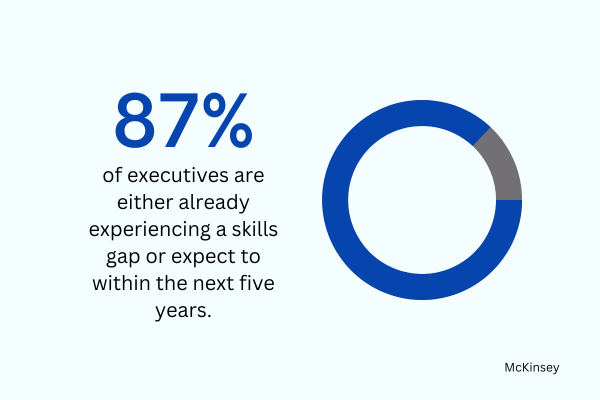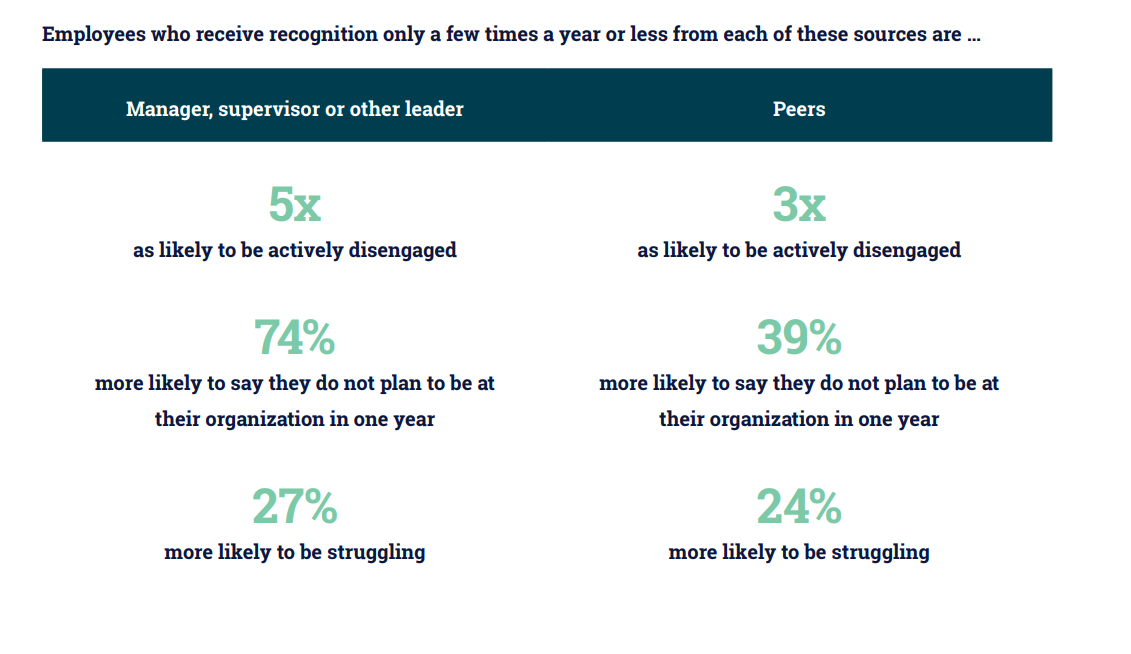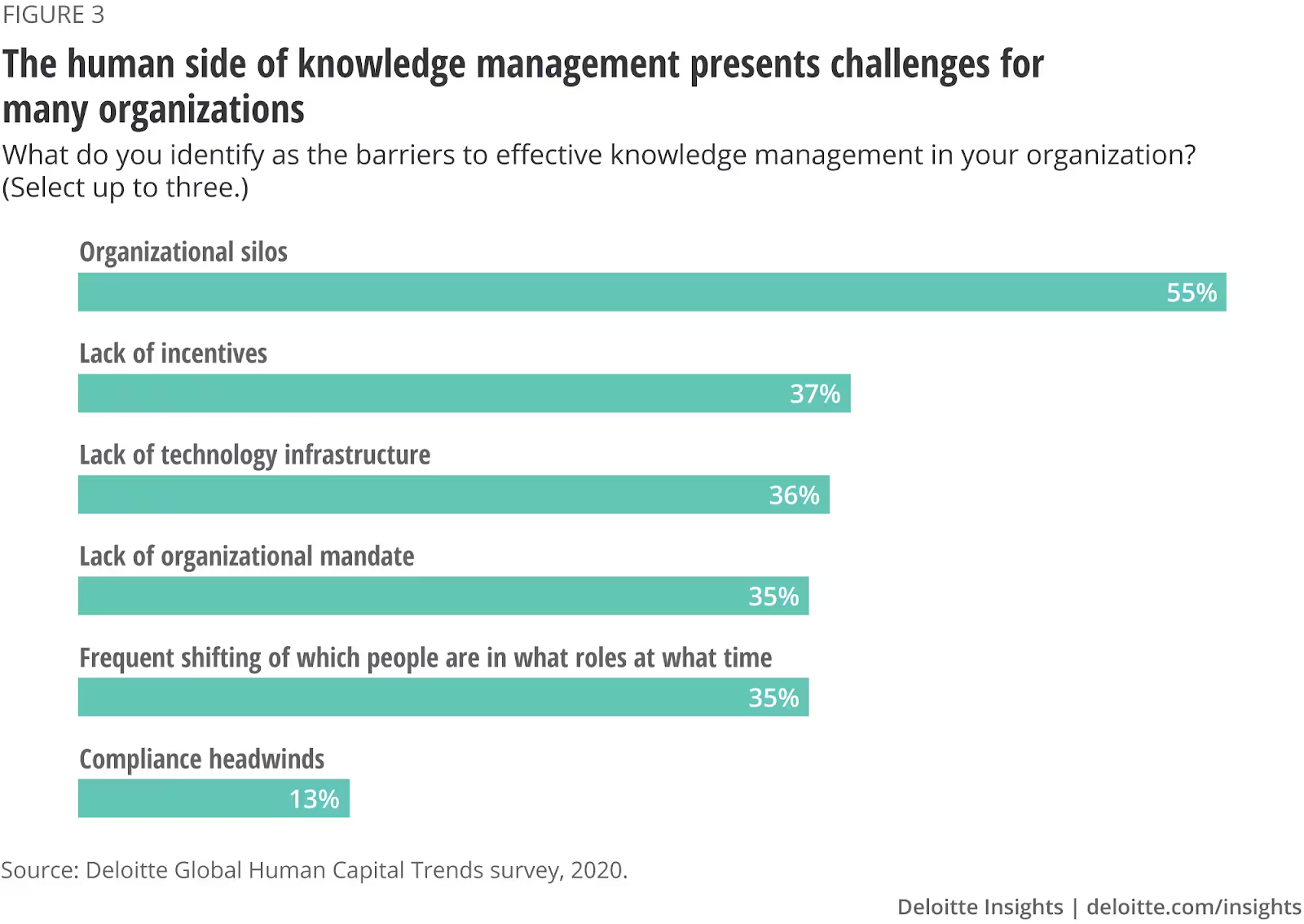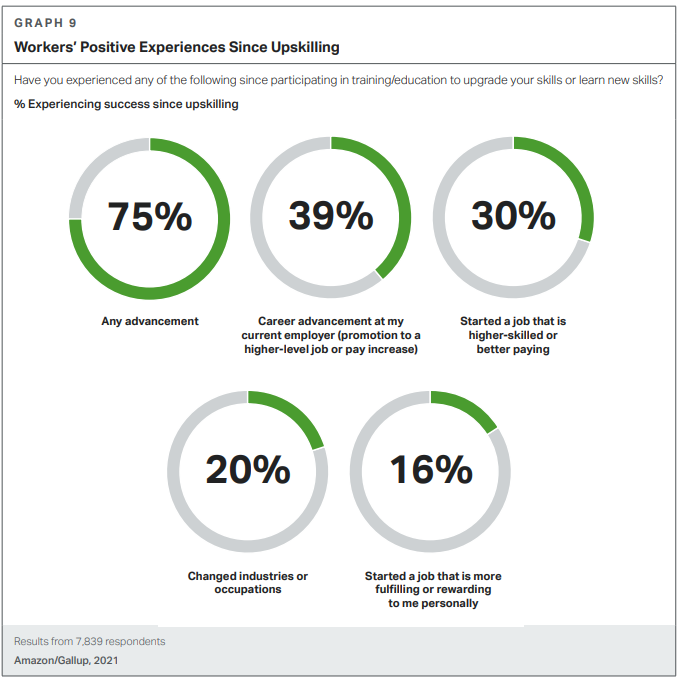Are you invested in the continuous learning and development of your workforce?
Upgrading your team members’ skills and knowledge is called employee upskilling—and it’s one of the most valuable investments that you can make.
From reducing hiring costs to improving employee retention and loyalty, there’s an abundance of employee training benefits you can take advantage of. The main benefit we will focus on here is increased business productivity and how you can maximise it by implementing upskilling into the core of your business’s culture.
So, here are eight ways to integrate employee upskilling to drive productivity, not only on an individual level but across your entire business operations.
1. Identify knowledge and skill gaps
Knowledge and skills gaps occur when employees don’t possess the training, experience, knowledge, and skills they need to complete tasks competently and succeed in their roles.
Skills gaps are a pressing issue. In fact, 87% of executives admit they are either already experiencing a skills gap or expect to within the next five years.

Image Sourced from mckinsey.com
Skills gaps can occur for several reasons, including a high turnover of experienced employees or lack of qualified candidates. Failing to recognise current skills gaps and foresee future skills gaps can significantly impact business operations and productivity.
Worst case scenario? Your business cannot keep up with the skills leveraged by your competition, causing your customers to leave you in the dust.
But don’t worry—filling skills gaps is achievable when done correctly. Rather than go through the expensive, exhaustive hiring process, you should consider filling gaps by upskilling current employees.
First, you need to identify the skills gaps in your workforce. How? Here are some quick tips for conducting a skills gap analysis:
-
Identify vital skills for each role.
-
Monitor key performance indicators (KPIs).
-
Conduct in-person observations.
-
Collect feedback from employees.
-
Survey managers for their insights.
Knowledge and skills gaps can be very industry-specific. In today’s workforce, gaps tend to revolve around emerging technologies, new coding languages, data analysis, and senior management.
2. Offer peer support and coaching programs
Employees can learn just as much from their peers as managers. Peer coaching often happens naturally in a physical workplace as colleagues observe and collaborate daily. These experiences are used—sometimes subconsciously—to drive professional development.
However, not only can you actively spur peer support by encouraging natural teamwork and collaboration, you can also establish formal peer coaching programs.
Peer support and coaching programs are set up to foster mutually beneficial learning relationships between employees of equal status. Through peer coaching, employees can identify and work on personal skills gaps they don’t feel comfortable sharing with managers (for example, communication skills).
They can also partake in activities that facilitate and drive upskilling, such as:
-
Knowledge-sharing discussions.
-
Study and revision sessions.
-
Mentoring.
-
Teamwork building and leadership development activities.
When employees fail to receive peer support and coaching, it can lead to them feeling under-recognized and unproductive. Employees are 3x more likely to feel actively disengaged with their role without peer recognition and 24% more likely to struggle at work.
This drives home the importance of peer support in maintaining high levels of productivity in the workplace.

Image Sourced from workhuman.com
3. Develop a positive learning environment
A negative learning environment goes beyond simply failing to offer employee training. Even with training programs in place, employers can inadvertently suppress learning opportunities if they fail to create a positive, employee-centric environment.
Negative learning environments can lead to issues that widen skills gaps and impair productivity, such as high turnover, disengagement, and poor job satisfaction.
One of the best ways to improve productivity and engagement in the workplace is to create an environment that embraces, encourages, and facilitates learning. You can achieve this by:
-
Aligning C-Suite executives and managers with the goals of learning and development initiatives.
-
Equipping your workforce with the tools and technologies they need to complete learning activities and perform business tasks.
-
Encouraging collaborative brainstorming, idea-sharing, and working.
-
Cultivating a growth mindset in which mistakes are seen as learning opportunities rather than failures.
-
Creating engaging and interactive training programs to yield better results.
4. Provide opportunities to utilize these skills
An employee’s upskilling journey doesn’t end once they’ve learned a new skill. To maximize the benefits, allow employees to utilize their new-found knowledge.
Involve employees in new or different projects that allow them to flex their newly acquired skills. Offer regular feedback so that they know how efficiently they’re utilizing them.
5. Create a culture of knowledge sharing
Knowledge hoarding causes productivity-hindering information silos. It slows down workflows, stifles problem-solving, creates friction between departments, and harms the employer-employee relationship.
Contrary to popular belief, inefficient technology isn’t the main driver of poor knowledge sharing. In fact, 55% of businesses surveyed by Deloitte said that organizational silos were the biggest obstacle to effective knowledge sharing.

Image Sourced from deloitte.com
Embracing knowledge-sharing on a company-wide level can enhance productivity, creativity, problem-solving, and relationship-building. It can also passively and actively enrich knowledge, closing gaps and improving operational efficiency.
As such, you should cultivate an open knowledge culture in which information is freely shared within teams, across departments, and between executives and employees.
How can you do this? Here are a few tips:
-
Establish an open-door environment where employees are encouraged to ask questions.
-
Use a centralized, cloud-based knowledge-sharing platform to store resources.
-
Incentivize and reward knowledge-sharing efforts.
-
Utilize collaboration and communication channels to facilitate knowledge-sharing for remote employees or between separate departments and offices.
6. Learn from competitors
Paying attention to what your competitors are doing can influence your own upskilling strategy.
Let’s say you discover that your competitors are beginning to use a powerful new technology to streamline small business workflows and deliver better customer experiences. Before they steamroll ahead, you can onboard your employees onto this technology and enjoy the same benefits.
Upskilling is also essential for maintaining a competitive advantage. By quickly identifying future skills gaps, you can work on addressing them before your competitors have even noticed they’re a threat.
7. Implement career development opportunities
Nothing accelerates productivity like the incentive of career development.
When employees are rewarded for their upskilling efforts with career development opportunities, they’re more likely to pursue these opportunities in the first place. What’s more, they’ll feel more motivated and engaged, leading to increased productivity.
It’s worth noting that 39% of employees say they received career advancement within their current workplace as a result of upskilling. In addition, 30% of employees who completed upskilling training left their current employer for another, either to acquire a pay increase or higher skill utilization.

Image Sourced from gallup.com
This suggests that when companies provide desirable career development opportunities for upskilled employees, the employee is more likely to stay loyal to that company.
8. Evaluate the impact of upskilling
The short and long-term success of upskilling can’t be determined by casual observation. To ensure that your upskilling initiatives are driving the results you want, you need to evaluate the right KPIs.
Which KPIs and metrics should you be tracking to monitor the impact of upskilling? The answer will depend on the specific job role. As a rule, you should measure how upskilled employees impact organizational performance metrics.
Timesheet management software is one of the most useful tools for measuring employee performance against organizational performance. You can track the productivity of recently upskilled employees to determine whether they’re hitting targets and meeting project deadlines. Plus, with real-time custom reporting, you can evaluate in-depth employee performance KPIs to gauge the success of your upskilling initiatives.
Aside from performance, other important KPIs and metrics to track include:
-
Time to proficiency.
-
Number of errors made.
-
Net promoter score.
-
360-degree feedback.
-
Return on investment (ROI).
-
Employee engagement.
Employee engagement KPIs like absenteeism and turnover rates are particularly important to keep an eye on. In relation to upskilling, these metrics could suggest anything from a poor upskilling experience to disengagement due to a lack of career advancement. Additionally, incorporating NPS methodology can provide valuable insights into employee satisfaction and loyalty, further informing strategies to improve engagement and retention.
An attendance-tracking absence management system can be used to identify potentially worrying absence patterns. As a result, you can quickly and compassionately reach out to employees and offer the support they need.
For example, if a recently-upskilled employee is feeling discouraged by repetitive work, you may not be providing them with the opportunity to utilize their new skills.
The takeaway
Effective employee upskilling requires so much more than simply creating a training program. To truly drive business productivity, learning and development need to be infused into the very core of your company’s culture.
Developing a knowledge-sharing culture and growth mindset company-wide is integral to effective employee upskilling. In addition, along with creating engaging upskilling opportunities that address current and future skills gaps, you must provide opportunities for employees to utilize these new skills.
Of course, offering career advancement is the ultimate incentive for driving individual productivity. It certainly has its uses, too, as you reduce hiring costs, close skills gaps, maintain a sustainable growth culture, and maximize company-wide productivity.







 (1) (1).png)



Hafiz Hamza Asghar11mo ago
Very informative and interesting article for new entrepreneurs
Very informative and interesting article for new entrepreneurs